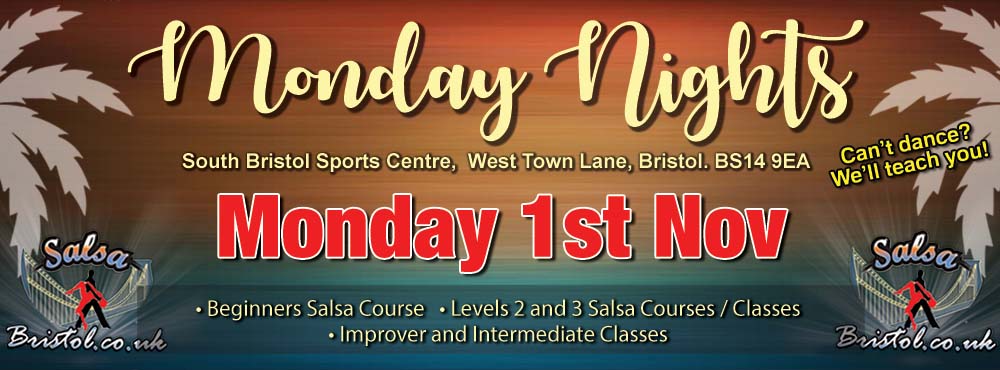Start Dates
We're now closed for the holidays! We look forward to seeing you again in 2026!
Book your place on the first beginner's course of 2026 Now!
Check out our course start dates for 2026.
Join our improvers and intermediate classes at any time.
Upcoming Events
There are no up-coming events
Newsletters
I recently read a quote where someone said that Salsa is a “contact sport”.
The subject of safety on the dance floor was also brought home to me recently after someone left me in pain and unable to dance for the best part of two weeks, after a collision while dancing.
Salsa can be a fast dance and keeping track of people around you all doing their own thing at random, is not easy. So, yes, accidents and bumps will happen. This part is to be expected.
However, that doesn’t mean that you can just shrug your shoulders and carry on regardless or without caring, or even being just plain ignorant – we all have a responsibility on the dance floor to try and be aware as possible of those around us, and not just the person we are dancing with.
When we dance, we are expressing ourselves and interpreting the music how we see fit, which sometimes means some people will make grand and sweeping moves. This is great and can add greatly to a dance. However, sometimes it gets too busy, and you have to reel it in or find alternative ways to style your dancing which occupies less floor space when you move.
If the dance floor is busy, you may literally only have inches around you to play with (I am not exaggerating here). This restricts what you can do and there are some moves in most peoples’ repertoire that should be avoided in order to prevent unwanted contact with someone else.
In these situations, remember to keep your moves more compact and take smaller steps.
Salsa is a partner dance, and this means that both people dancing together needs to watch out for each other. It’s not just the leader’s responsibility to be aware of where he or she is placing their partner, it is also the follower’s responsibility to watch out for their lead (they do not have eyes in the back of their head).
This can be as simple a slight pull on the lead’s shoulder (when in a close hold, for example) and/or coming up short to stop them going back any further and making contact with someone directly behind them.
Leads, remember to look at where you are going to place your follower before you put them there, and don’t just assume there is space available.
Even simple techniques such as keeping your hands in the right place (and not letting them flop around for example) and knowing when to keep your elbows in and/or down goes a long way to preventing accidents on the dancefloor. These are things good teachers should be passing on to students right from the beginning, so they become good habits from the start of their dancing “career”.
Even down to not taking overly large steps, keeping your feet away from others can help greatly.
While we can indeed expect the odd bump, which is something that is impossible to avoid completely, we should not get blasé about this subject to the point where we just shrug our shoulders and don’t have any regard for our fellow dancers.
Help keep the dancefloor a fun and safe place.
Start Dates
We're now closed for the holidays! We look forward to seeing you again in 2026!
Book your place on the first beginner's course of 2026 Now!
Check out our course start dates for 2026.
Join our improvers and intermediate classes at any time.
Upcoming Events
There are no up-coming events




Terms & Conditions
Subscribe
Report
My comments